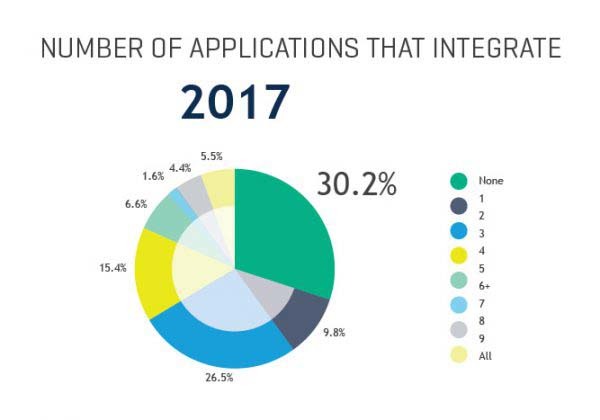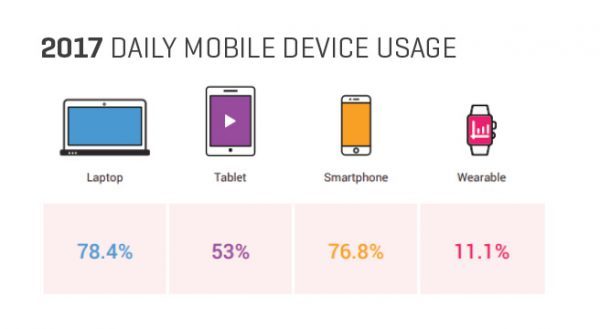The 10 Questions You Should Ask When Considering Project Management Software—Part 5 of 5
0%
Editor’s Note: This is the final installment in a five-part series on Construction Project Management — how innovative technologies and software are helping project managers streamline processes to build faster, smarter projects.
While many project managers today are still utilizing manual processes or working with significantly outdated software, it is becoming clear that this is less of a matter of choice. According to a 2017 Construction Technology Report by JBKnowledge in conjunction with the Construction Financial Management Association and others, 83.1 percent of respondents considered mobile computing capabilities on the project jobsite to be either “important” or “very important.”
More than three quarters of contractors surveyed in the JB Knowledge report said they were using either laptops or smartphones, while more than half were using tablet devices. That’s actually a decline from previous years, though the report notes that respondents are “eschewing the use of multiple devices in favor of a single device for multiple purposes.”
One area that has decreased is the number of programs or packages used. According to the JBKnowledge report: “The largest group of respondents in 2012 reported using six or more software solutions. The largest group of respondents in 2017 reported using only two software solutions. Popular software in 2017 may integrate more features rendering additional software superfluous, or respondents may have simplified and trimmed down their technology tools due to cost or implementation issues.”

One of the reasons contractors are using fewer software programs is that leading-edge software providers are better integrating functionalities together in single-system ERP platforms. This integration makes it easier to work from one source of data and create workflows throughout the program to streamline work
However, more than 30 percent of respondents noted that still none of their applications integrate. That means moving data via manual efforts or not at all.
Construction Software ROI
As these software packages improve features and functionality, doesn’t that make them more expensive? The short answer is yes, but in terms of return on investment, most contractors are quick to point out that the perks are well worth the price.
“Technology, when used correctly, makes everyone on site and in the office more efficient,” said Scott Builders Project Manager Dallas Williams. “If a $1,000 software solution saves a 10-person steel crew an hour on site, it has already paid for itself.”
Making the decision to seek out software boils down to commitment. Eventually, all contractors are going to have to use modern software and tools to compete in the marketplace, so it is more of a matter of when management pulls the trigger. For software to have a positive impact, it needs to be embraced—and utilized appropriately—company-wide.
“It has been worth the investment for our company,” said Hunter Contracting Project Sponsor Darin Bailey. “We are still learning ways to be more efficient with it, but it has already dramatically improved our operations. And there is help readily available to guide us through everything.”
The Construction Software Checklist—10 Questions to Ask

Once the decision is made to embrace new construction project management software, the next step is to determine what exactly project managers want it to do. Functionality (31 percent) was the number one answer in a 2015 Capterra survey when respondents were asked the most important consideration in selecting software. Ease of use and price were second and third respectively at 21 percent and 15 percent.
With that in mind, here is a look at 10 key feature and functionality questions project managers should be asking when selecting new software:
- Is the software easy to use? To get complete buy-in from users; software needs to be simple to use and present data relevant to each user. Is the interface clean? Is navigation intuitive? Do dashboards, grids, charts and other features make analyzing data easier?
- How straightforward is setting up a new project? Can the software easily import estimates and jobs created with ease, allowing teams to get right to work?
- Will it significantly reduce work and save time? Does the software reduce double or triple entry of data, does it automate processes and streamline work?
- Does it integrate well with accounting? Is there a two-way street that lets data easily flow between and influence both the managing of the physical project and accounting processes? Can it easily navigate data behind purchase orders and subcontracts; handle AIA and time and material billing; facilitate real-time job costing, WIP, and more?
- Will the software help create consistent structure across the company? In addition to integrating with accounting, will it provide a consistent platform where data from all departments (materials, HR, inventory, etc.) is uniform, allowing everyone on the project team and company to work with the same data?
- Are forms and other requests easily generated? When change requests, change orders, RFIs, submittals and more are needed, can they be created quickly and simply?
- If specific tasks are needed, are there workflows or alerts to address these and keep work moving? Is it easy to view and/or enter data from the field? Will being able to access data on the jobsite via mobile apps, kiosks or the full software package itself running on a laptop or tablet device allow project managers to operate fully wherever the jobs are?
- Does the software enhance collaboration? Is it a single vehicle to disseminate information to everyone on the project team in real time? Will the software ensure that everyone on the team is instantly clued in to changes in the project, schedules, updates and more and reduced chances for errors or conflicts?
- Can it effectively manage construction documents? Are there powerful document imaging and archiving functionalities that allow the attaching of documentation to different pieces of data and processes in the software?
- Will it be supported and scalable for the future? Will there be consistent maintenance and support of the software, is there a roadmap for future development and how well is it designed to adapt to future technologies?
And here’s a final bonus question that most project managers will likely have at the forefront of their lists—what will the return on investment be? The answer is that if embraced and used correctly, most software will ultimately pay for itself. Leading-edge software that is simple to use, easy to access and automates or streamlines processes further increases efficiency while saving time and minimizing costly mistakes and delays. The result is a quicker, easier project that turns project owners into repeat customers.
Download the full whitepaper, Construction Project Management on the Cutting Edge here.


